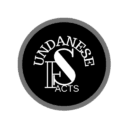Unveiling the Origins of Kuda Renggong Art from Sumedang
Kuda Renggong, a mesmerizing traditional art from Sumedang, West Java, gained recognition as an Intangible Cultural Heritage by Indonesia’s Ministry of Education, Culture, Research, and Technology in 2014. This captivating performance seamlessly combines horse-riding skills with traditional music, resulting in lively displays where trained horses “dance” to rhythmic beats and enact simulated fights with their handlers.

The Origins of Kuda Renggong
The enchanting Kuda Renggong tradition began in Cikurubuk Village, Buahdua Subdistrict, Sumedang Regency. According to Muhammad Fadar Junawar, the village head, Eyang Sipan, a local figure, introduced this art form in the late 19th century. Born in 1870, Eyang Sipan trained horses to perform rhythmic movements while bathing them at Cijaha Spring in the village. Over time, these efforts transformed the horses into skilled performers.
Initially, the trained horses served the royal activities of the Sumedang Larang Kingdom. However, the performances soon transcended royal use and became a cherished community tradition. Today, Kuda Renggong thrives across villages in Sumedang, with Cikurubuk itself hosting two active groups and other villages supporting numerous similar groups.
Cultural and Historical Significance
The word “Renggong” derives from the Sundanese term rereongan, which translates to “cooperation” or “teamwork.” This etymology underscores the communal effort behind each performance. Moreover, some scholars suggest that “Renggong” evolved from “Ronggeng,” a term associated with traditional Javanese dance.
Evidence of related cultural traditions, such as Ronggeng, appears in historical records. For instance, Pamarican Temple in Ciamis, West Java, is believed to be a significant site for ancient Ronggeng practices. Similarly, the Karmawibhanga relief at Borobudur Temple, dating back to the 8th century, portrays processions featuring musicians and female dancers, hinting at a connection between these ancient practices and Kuda Renggong.
In contemporary settings, Kuda Renggong often features prominently in celebratory events like circumcision rituals or weddings. During these occasions, three or four elaborately adorned horses parade through villages, enthralling audiences with their ability to “dance” to the beat of traditional Kendang Penca music.
One of the performance highlights is the Silat Kuda Renggong, a sequence where horses simulate “fighting” their handlers. These acts demonstrate both the trainers’ expertise and the animals’ remarkable agility, leaving audiences spellbound.
Preserving a Timeless Legacy
The enduring appeal of Kuda Renggong stems from the dedication of local communities. In Cikurubuk, younger generations actively participate in sustaining this legacy. Groups such as Obrog and Tanji accompany the performances with their traditional music, ensuring the art form remains vibrant.
Scholars like Pratiwi Wulan Gustianingrum and Idrus Affand have explored Kuda Renggong’s cultural significance. Their 2016 study, “Memaknai Nilai Kesenian Kuda Renggong dalam Upaya Melestarikan Budaya Daerah di Kabupaten Sumedang,” emphasizes the importance of this art in promoting regional cultural heritage.
Final Thoughts of Kuda Renggong
Kuda Renggong serves as a symbol of cultural pride and communal values in West Java. By celebrating this unique tradition, we honor the creativity and dedication of its practitioners while ensuring its legacy continues to inspire future generations. Indeed, Kuda Renggong represents more than a performance—it embodies the spirit of Sumedang’s rich cultural tapestry.
Read More:
Engko: The Unique Sundanese Vocal Art Preserving Lives in Disaster-Prone Cikahuripan
References:
- Pratiwi Wulan Gustianingrum & Idrus Affand. Journal of Urban Society’s Arts, Vol. 3, No. 1, 2016.
- Historical context and cultural interpretation: Various archival and local sources related to Kuda Renggong and Sundanese traditions.








1 comment